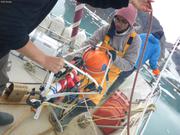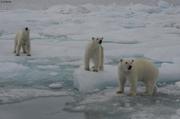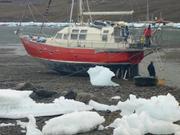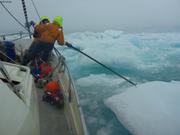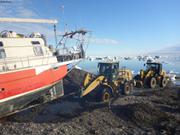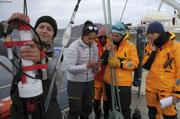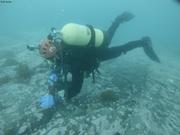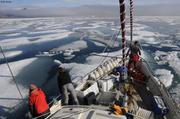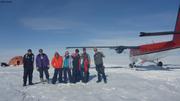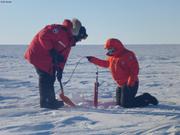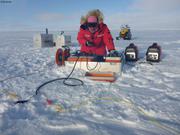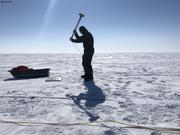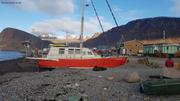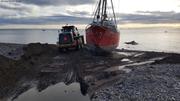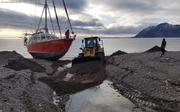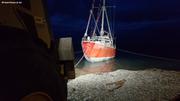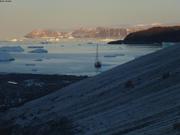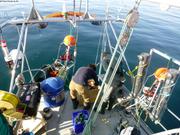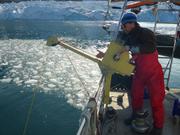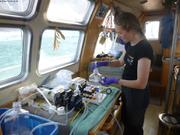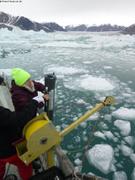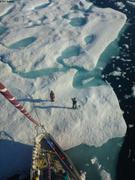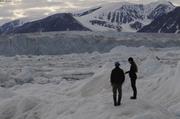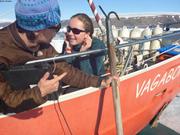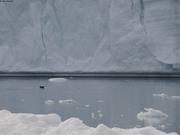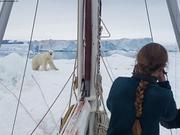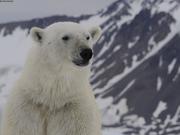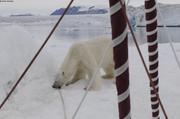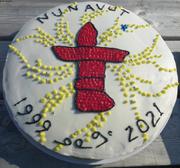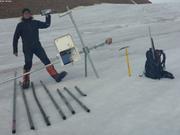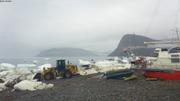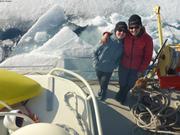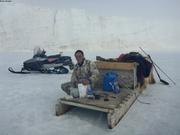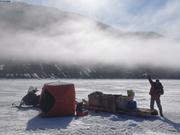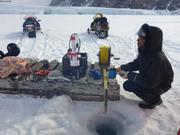Belcher's Hell
For the fourth consecutive summer, the science campaign takes us in front of the spectacular Belcher glacier front, coming straight down from the ice cap of Devon Island.
The breakup was late this year. Impossible to navigate before the beginning of August, "as before" said our friends from Grise Fiord. On August 8, there is still a lot of ice in Jones Sound, we have to be patient to find a way to Belcher (100km). Luckily we meet two bears in this dazzling maze.
At first, too much ice to get to the site. But we manage to reach a kind of shelter from where we observe the ice drift and recover a tide gauge set up a year ago. It's a no visibility dive: the water is so laden with sediments that it is already dark at less than 10m depth! Fortunately the icebergs didn't damage the instrument and the GPS coordinates are precise enough to find it.
August 11, Vagabond finds his way through the ice, pushing from time to time. The oceanographic mooring site is reached, there is little ice around, the sea is calm, so it's time to trigger the acoustic release and free the mooring from its weight. It works! Buoys and instruments gradually appear on the surface, all connected by a 300-meter-long line. Everything is recovered and secured on the deck which ends up very cluttered. The cages designed to protect the instruments from the icebergs are totally destroyed, but the majority of the sensors recorded properly for a year. The whole team is satisfied!
A moderate easterly gale is announced. No shelter in the area but the ice should protect us, as usual. Problem: the winds offshore are much stronger than expected, it's a very unusual storm. As a result, most of the ice is swept away and the swell forms. For endless hours, Vagabond is trapped between thick and hard ice floes hitting hard the hull, at every wave. Stress is increasing on board. At times we have to hold on not to fall, to shout to be heard. Will Vagabond resist? As the hours pass, we imagine the worst. I remind everyone where the survival equipment is.
I don't want to think about our crew taking refuge on the large ice floe that just sank our boat... Would we be able to wait for help? Which help? This scenario that we have always been prepared for has never seemed so close to happen.
The wind and the swell are finally decreasing, the pressure of the ice slackens, we get out of the trap and leave behind the three bears who kept us company during these thirteen hours of struggle. Exhausted, aboard a battered Vagabond, we search in vain for a shelter to wait for better conditions to sail to Grise Fiord. We end up going back into the ice, but this time in a very small bay filled with brash which dampens some of the swell.
On August 15, Vagabond is voluntarily stranded on the beach off Grise Fiord. At low tide, we can see how much Vagabond is damaged, but its sturdiness still impresses us. The hull is terribly dented, nothing to do. The rudder is fine, a miracle. The cages, twisted, protected the propellers; but the starboard cage is so deformed that it blocks the propeller. Yves helps us to straighten everything with a hydraulic jack, a blowtorch and an hammer. Inside the boat, cracked walls and broken pipes are quickly repaired. The science campaign can carry on.
After Belcher's crevasses, Belcher's ice...
This episode will haunt us for a long time, we will never finish learning about sailing in ice, captivating and formidable.
